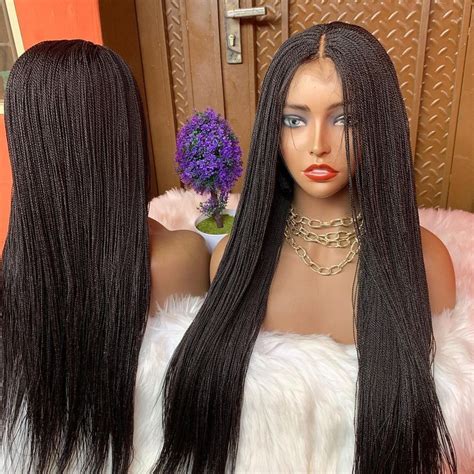Introduction
Braided human hair has been a timeless fashion statement for centuries, adorning heads throughout cultures and eras. From intricate cornrows to elegant fishtails, braids offer endless possibilities for self-expression and hair health. This comprehensive guide delves into the intricacies of braided human hair, exploring its techniques, benefits, and innovative applications.

Market Overview
According to Mordor Intelligence, the global braided human hair market is projected to reach a staggering USD 1.4 billion by 2027, exhibiting a CAGR of 6.4% during the forecast period (2021-2027). This growth is attributed to rising consumer demand for natural and protective hairstyles.
Styling Techniques
Braided human hair offers a vast array of styling options to suit every occasion and personal preference.
1. Classic Braids
These include the traditional three-strand braid, French braid, and Dutch braid, which create timeless and versatile looks.
2. Box Braids
Also known as cornrows, these raised braids provide a protective style that is both stylish and promotes hair growth.
3. Fishtail Braids
With their zigzag pattern, fishtail braids add a touch of elegance and sophistication to any hairstyle.
4. Waterfall Braids
These illusionary braids create the appearance of flowing hair cascades, offering a romantic and whimsical aesthetic.
Benefits of Braided Human Hair
1. Hair Protection
Braids shield hair from environmental damage, such as sun exposure, wind, and pollution. They also reduce friction between strands, minimizing breakage and split ends.
2. Length and Growth
Braids create an anchoring point for hair follicles, providing support that encourages hair growth. They also stimulate blood flow to the scalp, promoting healthy hair growth.
3. Scalp Health
Braids can alleviate scalp pain and tension by distributing weight evenly across the head. Additionally, they promote air circulation, reducing dryness and flakiness.
Pain Points and Motivations
Pain Points
- Braiding can be time-consuming and require professional assistance for complex styles.
- Braids may cause discomfort if pulled too tightly or left in for extended periods.
Motivations
- Desire for protective hairstyles to prevent hair damage and promote growth.
- Expression of cultural identity and personal style.
- Convenience and low-maintenance care routine.
Effective Strategies
1. Proper Preparation
Detangle hair before braiding to prevent breakage. Apply a leave-in conditioner or detangling spray to ease the braiding process.
2. Sectioning
Divide hair into manageable sections to create even and neat braids. Secure the sections with hair ties to prevent tangles.
3. Tension Control
Maintain even tension throughout the braiding process to avoid discomfort and hair damage. Use a hairbrush or comb to gently smooth and tighten the braids.
4. Knotting and Sealing
Secure the end of each braid with an elastic band or hair tie. Knot the ends to prevent unraveling and apply hairspray or gel to seal the braids.
Innovative Applications
Beyond traditional hairstyles, braided human hair is finding innovative applications in various fields.
1. Biomimicry
Braided hair structures have inspired the development of biomimetic materials, such as flexible and impact-resistant composites.
2. Medical Devices
Braided hair fibers can be used in medical devices, such as sutures and blood vessel grafts, due to their strength and biocompatibility.
3. Wearable Technology
Braided hair can be integrated with sensors and other electronics to create wearable devices that monitor health and activity levels.
4. Soft Robotics
Inspired by the movement of snakes and worms, braided hair can be used in soft robotics for applications ranging from surgical tools to exoskeletons.
Tables
Table 1: Braiding Techniques and Their Benefits
| Technique | Benefit |
|---|---|
| Three-strand braid | Simple, versatile |
| French braid | Elegant, conceals hair ties |
| Dutch braid | Thicker, more raised |
| Box braids | Protective, promotes hair growth |
| Fishtail braid | Intricate, romantic |
| Waterfall braid | Illusionary, cascading effect |
Table 2: Pain Points and Motivations for Braided Human Hair
| Pain Point | Motivation |
|---|---|
| Time-consuming | Protective hairstyles |
| Discomfort | Cultural expression |
| Matting | Convenience |
Table 3: Effective Braiding Strategies
| Step | Tip |
|---|---|
| Preparation | Detangle hair, apply leave-in conditioner |
| Sectioning | Divide hair into manageable sections |
| Tension control | Maintain even tension throughout |
| Knotting and sealing | Secure ends with hair ties, apply hairspray |
Table 4: Innovative Applications of Braided Human Hair
| Application | Example |
|---|---|
| Biomimicry | Flexible composites |
| Medical devices | Sutures, blood vessel grafts |
| Wearable technology | Health and activity monitors |
| Soft robotics | Surgical tools, exoskeletons |
Conclusion
Braided human hair is a versatile and transformative medium that empowers individuals to express themselves while promoting hair health. Through innovative applications, this ancient art form continues to inspire new frontiers in various fields. By embracing the techniques, benefits, and creative possibilities outlined in this guide, you can unlock the full potential of braided human hair, fostering beautiful, healthy, and innovative creations.
